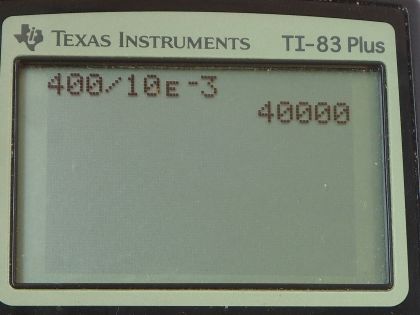Question
(a) What is the average power output of a heart defibrillator that dissipates 400 J of energy in 10.0 ms? (b) Considering the high-power output, why doesn’t the defibrillator produce serious burns?
Final Answer
- Power dissipated as heat in the skin is proportional to the resistance of the skin. Skin resistance is complicated - see Wikipedia article. The defibrillator voltage and frequency are such that skin resistance is reduced, which prevents the skin from dissipating heat and burning. Also, gel is put between the paddles and skin which prevents the air gap that would otherwise heat up and burn the skin.
Solution video
OpenStax College Physics, Chapter 19, Problem 6 (Problems & Exercises)

vote with a rating of
votes with an average rating of
.
Calculator Screenshots
Video Transcript
This is College Physics Answers with Shaun Dychko. A heart defibrillator delivers about 400 joules of energy in 10.0 milliseconds to a patient and the question is what is the power output? So that is the rate at which the energy is delivered so that's 400 joules divided by 10.0 milliseconds written as 10 times 10 to the minus 3 seconds and that works out to 4.00 times 10 to the 4 watts which is 40.0 kilowatts which is a lot of power! And part (b) asks how come this power being so high doesn't cause the skin to burn? So this P here is a different than the P than the one up here, this is the P—power dissipated in the skin itself— and it equals the current through the skin multiplied by the skin resistance. Now the skin resistance is actually quite low because of the way the defibrillator is designed. The skin is not an ohmic material, it doesn't follow Ohm's law very well. Its resistance is non-linear, it will change because of the frequency of the voltage applied or the current and little change with voltage as well so higher voltages actually reduce the resistance of the skin and certain frequencies reduce the resistance of the skin as well and so the defibrillator is designed to use frequencies and voltages and so on such that the skin resistance is low. I mean it's not designed for lowering skin resistance, it's designed for stabilizing the heart rhythm but it just turns out that skin resistance is lower as a result of whatever the defibrillator does to reset the heart rhythm. So there's also gel put between the paddles and the skin and that gel is conducting and it prevents an air gap between the paddle and the skin because the air would heat up and I guess burn the skin if the gel was not there.
